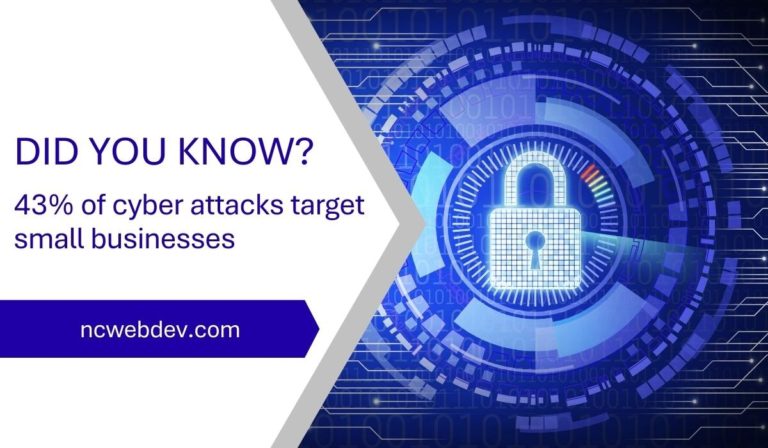Cyber attacks against small businesses have become a significant problem in recent years. A study from the Ponemon Institute found that 43% of all cyberattacks target small businesses with fewer than 100 employees, and the consequences of these breaches can be extremely costly, from lost productivity to company reputation. These businesses often don’t have the resources to deal with a data breach, and as a result, they suffer from decreased customer loyalty and increased costs associated with rebuilding their brand.
Businesses Must Be Prepared
This means that, for most businesses, cyber attacks are a reality, and they need to be prepared for them. Cyber attacks can have a crippling effect on a small business, costing it time and money, as well as damaging its reputation. In fact, 60% of all small businesses, who become victims of a data breach, permanently close their doors within six months of the attack.
The Top Target Industries
According to the IBM Security X-Force report, cybercriminals targeted the manufacturing Industry most in 2021, followed by finance & insurance, professional & business services, energy, retail & wholesale, and the healthcare industry. The report also notes that ransomware attacks were the top cyber attack type in 2021.
Different types of Cyber Attacks:
Social Engineering Scams
These are a popular way to steal information. They involve deceiving or manipulating someone into divulging confidential or personal information for fraudulent purposes. There are many types of social engineering scams, including: Phishing, which is where hackers try to get you to enter your login information onto a fake website. Spear Phishing is when hackers send you an email that looks like it’s from a trusted source, but instead it contains malicious content.
These are not scams, which a properly designed web site could protect you against. You can protect yourself against these by being aware of them and taking precautions when opening communication from unknown sources. A properly designed mail server can help to prevent these types of emails from being delivered to your inbox. If you get a text message or social media alert with a link to a web site and are unsure about its origin, simply do not open it. Not worth the risk.
Malware
Cyber attacks that install harmful software on a user’s computer after clicking on a harmful link or opening an unknown email attachment are called malware. This type of software can lock down a computer, block access to files and other critical network components, and obtain sensitive data. Malware is a type of software that is used to gain access to a user’s personal information, such as passwords and credit card numbers. Ransomware, a common and highly disruptive type of malware, locks computer files through encryption, until a specific ransom is paid for a key to decrypt the data. Other types of malwares are Trojan horses and drive-by attacks.
SQL Injections and Other Web Application Attacks
A Structured Query Language (SQL) injection is a cyberattack in which a hacker inserts malicious code into a service that uses SQL, causing it to reveal information it would normally not display. This can include customer details, user lists, and other confidential company data.
Denial-of-Service (DoS)
 This attack occurs when hackers overload a system’s resources and cause it to become unresponsive to service requests and inaccessible to authorized users. For example, a hacker could flood a server with requests or overwhelm it with traffic. We wrote a more in depth article on this DDoS attacks here.
This attack occurs when hackers overload a system’s resources and cause it to become unresponsive to service requests and inaccessible to authorized users. For example, a hacker could flood a server with requests or overwhelm it with traffic. We wrote a more in depth article on this DDoS attacks here.
Botnets
Botnets: these are networks of infected computers that can be used to carry out cyberattacks. The bots, or infected computers, are often controlled by a botmaster, who can use them to steal personal information, spread spam, and deliver viruses. Botnets can be very large, with some estimates suggesting that there are tens of millions of bots in some botnets.
Brute-force attack:
When an attacker starts submitting many passwords or passphrases with the hope of eventually guessing correctly. A good prevention is using a complicated, impersonal password that is difficult to guess. You also must use more than just alphanumeric characters. Using weak passwords can bring your entire web site, i.e. business to an abrupt halt. For a nice table on this topic, you can checkout this post on LinkedIn. It will give you a good idea about the importance of having a good password length and structure.
How is your website and email server protected? Do you update your website and its components regularly? If you’re not sure, let’s review your security status together. Security and updates are all part of proper WP Managment. If you found this article insightful, you can follow our LinkedIn page NCWEBDEV. More is to come; you don’t want to miss out.


